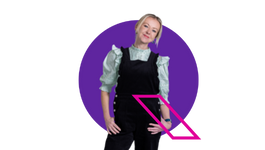A SpaceX booster rocket has returned to earth and been caught by giant robotic arms - following a successful launch of the company's reusable Starship spacecraft.
It was the first attempt to bring the rocket's 232-foot (71 metre) Super Heavy booster back to the launch tower.
Three of its 33 Raptor engines were re-ignited to slow its speedy descent.
After separating from the Starship second stage at a height of 46 miles (74km), the booster returned to Boca Chica in Texas, where it was grabbed and clamped in place using what the company describes as "chopsticks".
Arguably, they look more like massive pincers mounted on a giant steel tower.
The catching of the booster was not guaranteed. Both it and the launch tower had to be in good, stable conditions, SpaceX said.
But it settled into position in what appeared to be a calm, controlled manner.
The manoeuvre was considered a major breakthrough as, previously, early stages of similar-sized rocket launch vehicles like Saturn V crashed back down to Earth and were regarded as expendable.
SpaceX tweeted that "Mechazilla" had caught the "Super Heavy booster!"
"Are you kidding me?" SpaceX's Dan Huot said. "I am shaking right now."
"This is a day for the engineering history books," added SpaceX's Kate Tice.
SpaceX owner Elon Musk said on X, which he also owns: "The tower has caught the rocket!!"
Space journalist Kate Arkless Gray said the booster was still travelling at a supersonic speed less than a minute before landing.
"The deceleration involved in that is wild," she told Sky News.
She added: "SpaceX have really, really innovated. Even just a few years ago, the idea of bringing a booster back to land or a barge in the sea - no one was doing that."
The Starship second stage, meanwhile, continued on into space before landing in the Indian Ocean, west of Australia, following its fifth test flight from the launch pad on the border with Mexico.
"Splashdown confirmed!", SpaceX said on social media.
The Starship second stage and the Super Heavy booster are designed to carry crew and cargo to the moon and beyond - and be reusable.
The Federal Aviation Administration (FAA) approved the launch only yesterday, weeks earlier than expected.
Previously, the FAA said a decision on Starship 5 was not expected until late November.
But it said Elon Musk's company had "met all safety, environmental and other licensing requirements for the suborbital test flight".
It has also approved the Starship 6 mission profile.
Musk has heavily criticised the FAA - partly over the delay in approving the licence for Starship 5, which SpaceX said was ready in August.
SpaceX describes Starship as the world's "most powerful launch vehicle ever developed", capable of carrying up to 150 metric tonnes.
First unveiled in 2017, it has exploded several times in various stages of testing.
In June, it successfully completed a full flight for the first time.

(c) Sky News 2024: SpaceX rocket booster makes successful landing after test launch - as it is caught by '


 An Israeli attack on Iran's oil bases could have massive repercussions - and may help Trump's chances of winning election
An Israeli attack on Iran's oil bases could have massive repercussions - and may help Trump's chances of winning election
 Man shot dead in east London
Man shot dead in east London
 Ukraine claims Russia killed nine drone operators after they had surrendered
Ukraine claims Russia killed nine drone operators after they had surrendered
 Swastikas and other antisemitic messages raked into Hendon Golf Club bunkers
Swastikas and other antisemitic messages raked into Hendon Golf Club bunkers
 Joe Biden describes losing his own home in a lightning strike during Florida tour of hurricane devastation
Joe Biden describes losing his own home in a lightning strike during Florida tour of hurricane devastation